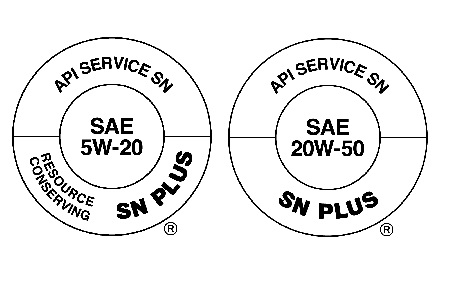
The American Petroleum Institutes Lubricants Standards Group formally adopted API SN Plus last week but still has not set a date for first licensing. The group – along with automakers – would like that date to be May 1, but a schedule has been held up by testing related to base oil interchange and read-across rules for one of the tests in the supplemental oil category.
During a Jan. 11 meeting, some members expressed concerns about interchange and read-across guidelines not being set this close to the targeted first-licensing date.

Photo courtesy of Kevin Ferrick
SN Plus will only appear in the API Donut.
SN Plus is a supplemental category intended to tide over automakers until the much-delayed GF-6 specification can be implemented. In August, at the request of automakers, the lubricants group unanimously voted to move forward with the supplemental category in order to more quickly protect turbocharged engines against low-speed pre-ignition.
During a ballot held in November and December, the Lubricants Group voted 18-3 to adopt the supplemental category. The panel met Jan. 11 to discuss nay votes and to formally adopt the supplemental category. The senior manager of APIs engine oil program, Kevin Ferrick, noted multiple members brought up the ongoing testing of interchange and viscosity grade read-across rules for the Sequence IX test for protection against low-speed pre-ignition.
The API BOI/VGRA Task Force will review the data from the Sequence IX matrix that is currently being run, and we hope that guidelines will be balloted for inclusion in API 1509 Annexes E and F in the next month or so. The availability of these BOI/VGRA guidelines will also help API to determine if the May 1, 2018 first licensing date is still appropriate, Ferrick said.
Interchange rules allow lubricant formulators to replace a base stock in an approved engine oil formula without having to re-run all the engine tests that are part of an oil specification. This is important because engine tests are so expensive and having to run more tests also impacts how long it takes for new products to be deployed. In addition, industry insiders have said that in order to prepare for first licensing on May 1, formulators have begun moving forward with production of products that would be labeled as SN Plus, based on assumptions that the interchange and read-across guidelines proposed for Sequence IX will be adopted.
Observers have expressed a high level of confidence that the proposed guidelines will be adopted, and Ferrick said that could happen within a month. One source said more than half of the tests required for acceptance of the guidelines have been completed with positive outcomes or are in process at this time.
Should the outcome not live up to expectations, marketers could face significant financial ramifications, which may include running additional tests to meet requirements or having to wait on changing labels. In a worst-case scenario formulas would need to be modified, requiring a product transition. Other sources have noted that they believe new products have demonstrated that they can protect against low speed pre-ignition as defined by the new Ford Sequence IX test and are confident that the May 1 date is achievable.